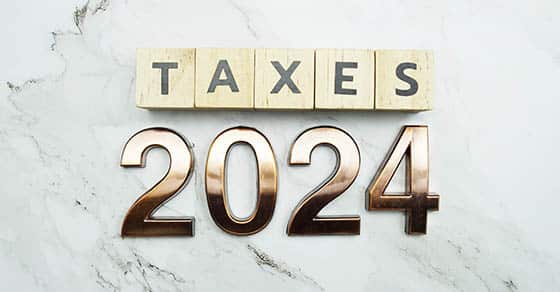As the year draws to a close, it’s generally manufacturers’ last chance to implement strategies to reduce their 2024 tax liability. Several provisions of the Tax Cuts and Jobs Act (TCJA) can still provide substantial tax benefits. And a range of newer tax-saving provisions in the Inflation Reduction Act (IRA) and the CHIPS Act provide additional year-end tax planning strategies to consider.
Section 179 expensing election
For several years, manufacturers have benefited from TCJA changes related to depreciation. For example, the law increased both the deduction limit and the phaseout threshold for the Sec. 179 expensing election. The maximum deduction for 2024 is $1.22 million, and the deduction begins phasing out when your qualifying purchases exceed $3.05 million.
If you haven’t already maxed out your Sec. 179 deduction, you can trim your tax bill for 2024 by purchasing new and used eligible assets and placing them in service before year end. Eligible assets include machinery, equipment, office furniture, software and certain business vehicles. You also can immediately expense qualified improvement property (generally, interior improvements to your facilities) and certain improvements to your roof, HVAC, and fire protection and security systems.
The Sec. 179 expensing election is limited by your income from business activity though. You can carry forward the excess or deduct the eligible portion as bonus depreciation, which isn’t subject to any dollar limits or phaseouts.
Bonus depreciation
There’s a ticking clock to consider regarding first-year bonus depreciation. That’s because the TCJA reduces 100% first-year bonus depreciation by 20 percentage points each tax year until it vanishes in 2027 (absent congressional action). The deduction has dropped to 60% of the purchase price for 2024.
If you expect to make an eligible purchase early in 2025, consider whether it makes sense to expedite it into this year to potentially obtain a larger immediate deduction. Eligible property includes new or used assets, such as machinery, equipment, computer systems, software, certain vehicles and office furniture with a useful life of 20 years or less.
Bear in mind that accelerated depreciation isn’t always the right choice. The depreciation deductions could prove more lucrative in the future, for example, if you expect to move into a higher tax bracket. Plus, accelerated depreciation can reduce the benefits of other tax breaks, such as the Sec. 199A deduction for qualified business income (QBI). It’s worth noting, too, that the Sec. 199A QBI deduction is scheduled to expire on Dec. 31, 2025.
Research credit
The TCJA also amended the tax treatment of research and development (R&D) costs in a way that benefits many manufacturers. They now may be able to both:
- Claim the full research credit (often called the “research and development” credit) for direct research costs, and
- Recover all their research and experimentation costs with the Sec. 174 deduction.
Note that while the research credit and the Sec. 174 deduction can be claimed in the same year, they cannot both be claimed for the same expense. For each dollar of expenditure, you must determine whether the credit is applicable and, if it isn’t, determine whether the deduction would be proper.
The research credit is a valuable but often overlooked incentive for manufacturers, generally available for new or improved products or processes. And it can offset some of the higher tax liability caused by the TCJA’s requirement that businesses amortize Sec. 174 costs over five years (or 15 years for expenses incurred outside the country). Now’s the time to investigate whether you might have incurred qualified research expenses this year.
Newer incentives
The IRA and CHIPS Act created numerous incentives manufacturers may be able to leverage before year end. For example, Sec. 48D allows an advanced manufacturing investment tax credit equal to 25% of qualified investments in facilities that make either semiconductors or equipment used to manufacture semiconductors. You can claim the credit for 2024 by placing qualified property integral to the operation of the manufacturing facility in service before year end.
The Sec. 45X advanced manufacturing production credit is for the U.S. production and sale of certain eligible components — including solar and wind energy components, inverters, qualifying battery components and applicable critical minerals. The credit amount is calculated based on the amount of eligible components produced during the tax year. So ramping up production over the next few months will increase your credit. Note that the Sec. 45X credit begins to phase out in 2030.
Don’t delay
You may need to take prompt action to make the most of these and other 2024 tax reduction opportunities. Contact us if you have questions regarding year-end tax planning. We’d be pleased to help.
© 2024




